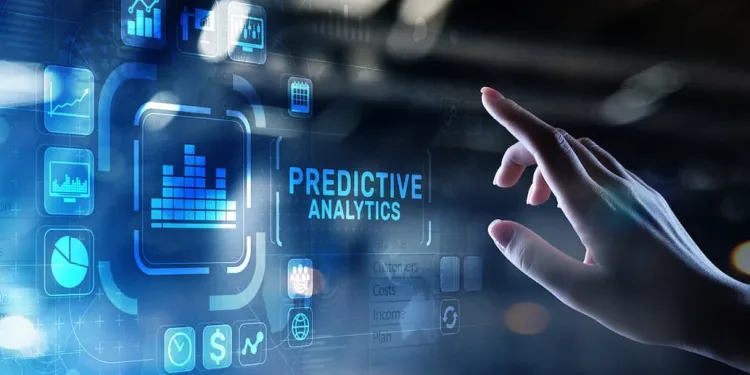Introduction
In today’s digital age, businesses have access to vast amounts of data about their customers, markets, and industry trends. Predictive analytics is a powerful tool that helps marketers make data-driven decisions, optimize campaigns, and anticipate consumer behavior. By leveraging artificial intelligence (AI), machine learning (ML), and statistical modeling, businesses can forecast future trends and improve marketing performance.
In this article, we’ll explore what predictive analytics is, how it works, and the key benefits it offers for marketing strategies.
What Is Predictive Analytics?
Predictive analytics refers to the use of data, statistical algorithms, and machine learning techniques to identify the likelihood of future outcomes based on historical data.
In marketing, this means analyzing past consumer behavior, engagement, and purchasing patterns to predict what customers are likely to do next. Businesses use predictive analytics to:
- Forecast sales and demand.
- Personalize marketing campaigns.
- Optimize advertising budgets.
- Improve customer retention and lifetime value.
How Predictive Analytics Works in Marketing
1. Data Collection and Integration
Predictive analytics starts with collecting and integrating data from various sources, such as:
- Website interactions (clicks, page views, time spent).
- Social media engagement.
- Email marketing responses.
- Customer purchase history.
- Customer service interactions.
2. Data Processing and Cleaning
Raw data often contains inconsistencies, missing values, or irrelevant information. Businesses must clean and organize the data to ensure accurate predictions.
3. Identifying Patterns and Trends
Using machine learning algorithms, businesses analyze data to identify correlations between customer behavior and specific outcomes. For example:
- Customers who frequently browse a product page but don’t purchase may need a discount incentive.
- Customers who open emails but don’t click links may require more engaging content.
4. Building Predictive Models
Marketers use statistical models and AI-driven tools to predict customer behavior. Common models include:
- Regression Analysis – Determines how different variables (e.g., price, promotions) influence customer decisions.
- Classification Models – Categorizes customers into different segments based on purchasing behavior.
- Clustering Algorithms – Groups customers with similar behaviors for targeted marketing.
5. Implementing Predictions in Marketing Strategies
Once predictions are generated, marketers use them to make data-driven decisions in areas like:
- Personalized Advertising – Delivering ads based on customer preferences and purchase history.
- Email Marketing Optimization – Sending targeted emails with product recommendations.
- Sales Forecasting – Predicting seasonal trends to manage inventory and promotions.
Key Benefits of Predictive Analytics in Marketing
1. Improved Customer Targeting and Personalization
Predictive analytics enables hyper-personalized marketing by analyzing customer preferences and predicting what products or content will interest them.
🔹 Example: Amazon and Netflix use predictive algorithms to recommend products and shows based on past behavior.
2. Increased Marketing ROI
By targeting the right audience with relevant content, businesses reduce wasted ad spend and improve conversion rates.
🔹 Example: Google and Facebook use predictive analytics to optimize ad placements, ensuring they reach users most likely to engage.
3. Higher Customer Retention and Loyalty
Predictive analytics helps businesses identify customers at risk of churning and take proactive measures to retain them.
🔹 Example: Subscription-based companies use predictive models to offer personalized discounts or engagement campaigns to prevent cancellations.
4. Optimized Pricing Strategies
By analyzing competitor pricing, demand fluctuations, and consumer behavior, businesses can adjust their pricing models in real time.
🔹 Example: Airlines and hotel booking platforms use predictive analytics for dynamic pricing strategies.
5. Better Demand Forecasting
Predictive analytics helps businesses anticipate customer demand and manage inventory efficiently.
🔹 Example: Retailers use predictive models to stock popular products during peak seasons, reducing overstock or shortages.
Real-World Applications of Predictive Analytics in Marketing
1. E-commerce Personalization
Online stores use predictive analytics to recommend products based on a customer’s browsing and purchase history.
Example: Amazon’s “Customers Who Bought This Also Bought” feature.
2. Predictive Email Marketing
Email campaigns can be optimized by predicting which subject lines, send times, and content will generate the highest engagement.
Example: E-commerce brands use AI-driven email automation tools like HubSpot and Klaviyo.
3. Social Media Advertising
Predictive analytics helps brands analyze audience interactions to create highly targeted ad campaigns.
Example: Facebook and Instagram use predictive models to determine which ads to show users based on their past behavior.
4. Customer Churn Prediction
Companies use predictive analytics to detect warning signs of customer churn and implement retention strategies.
Example: Telecom companies analyze call history, billing patterns, and customer complaints to predict churn and offer special deals.
Challenges and Limitations of Predictive Analytics
1. Data Privacy and Ethical Concerns
Collecting and analyzing customer data raises privacy concerns. Businesses must ensure compliance with regulations like GDPR and CCPA.
2. Data Quality Issues
Poor data quality, missing values, or biased data can lead to inaccurate predictions. Businesses must invest in data cleaning and validation.
3. Implementation Complexity
Building and maintaining predictive models requires expertise in data science and machine learning. Many companies rely on third-party analytics platforms like Google Analytics, IBM Watson, or Salesforce Einstein.
Future of Predictive Analytics in Marketing
As AI and machine learning continue to advance, predictive analytics will become even more sophisticated. Future trends include:
- AI-Powered Chatbots – Predicting customer inquiries for personalized responses.
- Voice Search and Predictive SEO – Optimizing content for voice-based searches.
- Real-Time Predictive Analytics – Providing instant recommendations based on live customer interactions.
Businesses that embrace predictive analytics will gain a competitive advantage by making data-driven marketing decisions.
Conclusion
Predictive analytics is revolutionizing marketing by enabling businesses to anticipate customer needs, personalize campaigns, and maximize ROI. As technology advances, predictive models will become even more precise, helping marketers stay ahead of trends and customer expectations.



13 thoughts on “Predictive Analytics in Marketing”
Comments are closed.